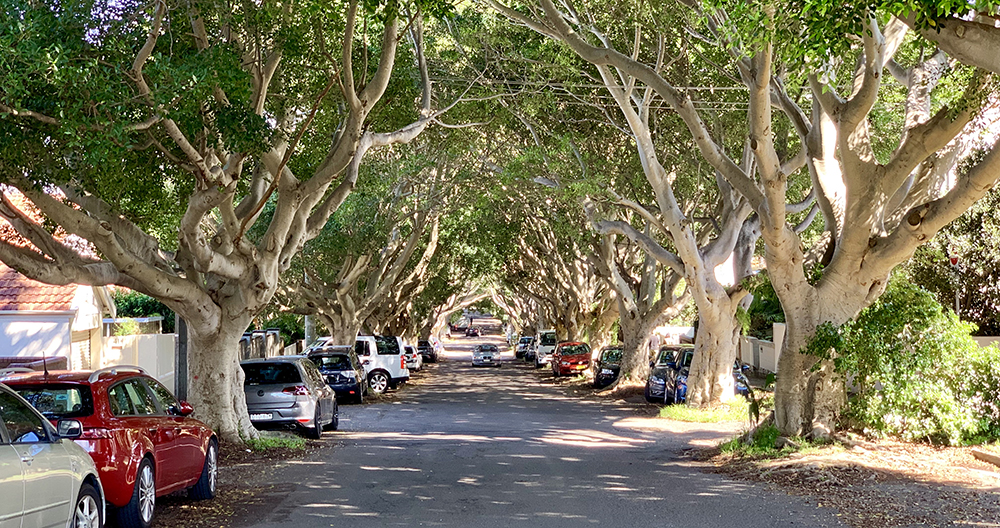
Urban tree canopy
Urban trees play a significant role creating liveable neighbourhoods and increasing the health and wellbeing of communities.
These trees are important assets for communities and councils, bringing aesthetic appeal to towns and cities, along with many other benefits, including:
- Biodiversity support and provision of important habitat corridors for native plants and animals
- Lowering heat through transpiration, shade and passive cooling
- Increasing energy efficiency by reducing the need for air conditioning
- Improving air and water quality
- Increasing human health and wellbeing
- Enhancing water absorption by slowing stormwater and reducing peak flows
- Enhancing property values
- Reducing noise
Local Government NSW provides policy support and advocacy services for member councils on a range of urban canopy issues.
Urban forests
Urban forests encompass all trees, shrubs and bushes within towns and cities, including those on public streets, private land, and in park and bushland settings. Urban forest policies direct planning and management of urban forests so residents and communities receive maximum benefits in cost effective and ecologically sound ways.
A number of councils have developed urban forest policies to manage and plan for urban greening, including City of Sydney, Wollongong City Council. Councils may choose to develop standalone Urban Forest Strategies (also known as Urban Canopy Strategies or similar), or may choose to embed management of the urban forest into Community Strategic Plans, Local Strategic Planning Statements (LSPSs) or other existing strategies.
The NSW Government has developed the Greener Neighbourhoods Guide to assist councils with urban forest strategic planning. This guide is for local governments across NSW that want to establish, build upon or re-envisage strategic planning for urban forests. It provides guidance on how to understand, plan for, monitor and manage urban forests and promotes best practice and consistency in urban forestry. The NSW Government has also provided updated tree canopy data (2019) for Greater Sydney councils. The data is a basis on which development of urban forest strategies can be built.
Additionally, several NSW councils have developed Street Tree Master Plans to guide planting and increase the quality and quantity of urban canopy. Examples include Wingecarribee Shire Council, City of Ryde, and Mosman Council. These master plans provide visions for streetscapes and help ensure species selection provides the right tree in the right location.
Green infrastructure
Green infrastructure includes integrating natural elements into built environments to help solve urban and climatic challenges. A broad range of techniques are used to integrate green, permeable, and heat absorbing surfaces into cities and towns, including:
- Green roofs and living walls
- Bioswales
- Permeable and/or light coloured surfaces and pavements
- Rain gardens
- Soft landscaping of detention basins and stormwater channels and culverts
- Biophilic design
The NSW Government has produced Technical Guidelines for Urban Green Cover in NSW to provide advice on best practice.